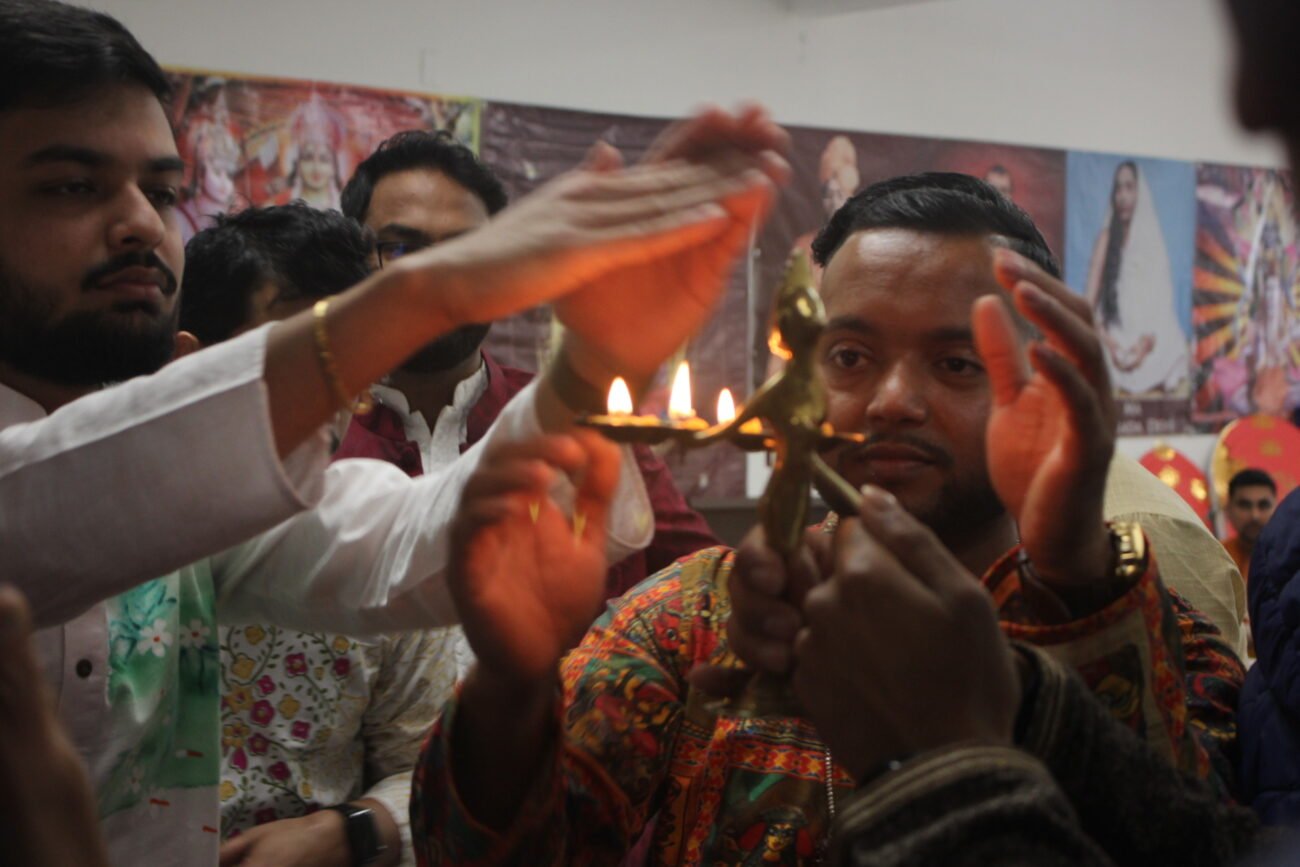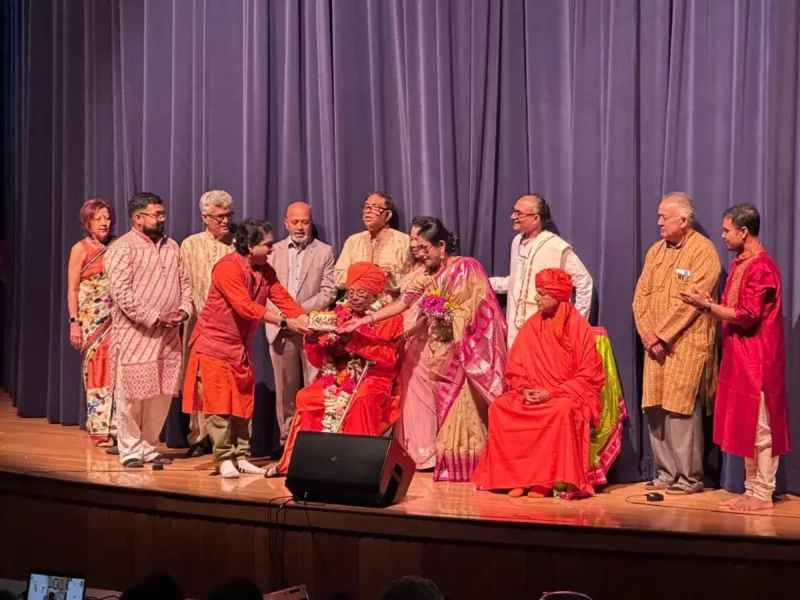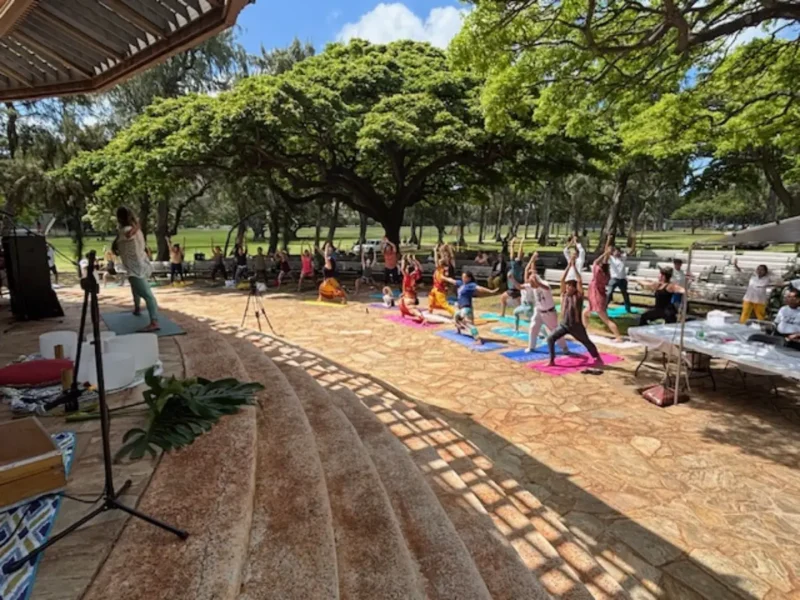
Bengali Hindus Emphasize Community Strength
By Sangmin Kim
LOS ANGELES, CA – The thunderous and rhythmic beating of the drum echoed out of the small Los Angeles Hindu Temple as the priest, clad in yellow and hints of orange, sat in front of the intricately sculpted statue of Saraswati.
For Bengali Hindus, Saraswati Puja, the Hindu festival celebrated 40 days before the official start of the spring season, puts its focus on worshiping the goddess. Young children, typically 4 and 5 years old, start learning and writing on tree leaves to be blessed with Saraswati’s knowledge in a ceremony known as Hate Khari.
Saraswati Puja, also known as Vasant Panchami, is a major celebration for Bengali Hindus. This year, the festival date was February 14, though the Bengali Hindu Association of Los Angeles organized their celebration on February 18. Despite being a smaller community in both Bangladesh and California, Bengalis of all ages filled the temple with vibrant colors and enthusiastic chatter.

Vasant Panchami is a Hindu festival observed by several religious groups in India, including Hindus, Sikhs, and Jains. However, the significance of the festival differs for each group.
Most people in Bangladesh are Muslims, making Bengali Hindus a minority both within the country and in the United States. According to the Joshua Project, 19% of Bengalis are Hindus while 80% are Muslim.
Amio Das, the son of BHALA’s Senior Adviser Achinto Das, said many Bengali Hindus come to the U.S. to feel more secure in their faith as religious minorities in Bangladesh. “You feel like it’s more controlled over here, you feel like you’re protected more than in developing countries,” Das said. “Anyone can come by your house and burn it down, or make a mess in your temple, or whatever. That happens a lot.”
Das also said the small community’s faith in Hinduism helped them connect with nearby Indian Hindu communities. “A lot of the time, the bigger-scale events, they’re done by Indians, just because they have more people, more manpower, more resources, more assets, just like we have these smaller spaces,” Das said. “So we bring our people together as well. We also have our specific people. But for the bigger events, it’s everyone together.”
Smita Sarker, a senior at the Girls Academic Leadership Academy, said she grew up with Indian Hindus in school. On top of rarely seeing other Bengalis, Sarker said she could relate easily to her Indian friends over the connection of them all being Hindus.

Sarker also said she wanted to continue the growth of this temple and community into adulthood.
“The more I think about it, because it’s very newly founded, I want to continue it because they invested a lot of time and money,” Sarker said about the temple, which was founded in 2022. “So, it’s very important for me to continue this.”
Dr. Mukherjee said it is the elders’ responsibility to connect to the youth and preserve the Hindu identity among the Bengali diaspora living in the U.S. He called the younger generations the legacy who will carry the community forward in the future.
His 15-year-old son, Sujash Mukherjee, learns the responsibilities of being a priest by assisting his work. Dr. Mukherjee said he is trying to set an example; otherwise, he said he wouldn’t be authorized to ask other adults in the community to do the same.
“Involving youth and inviting them to be a part of it is a primary responsibility that any temple or religious organizations should have,” Dr. Mukherjee said.




